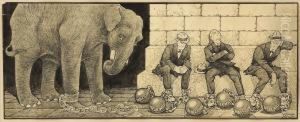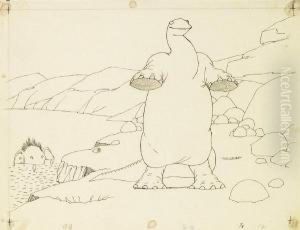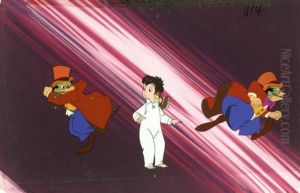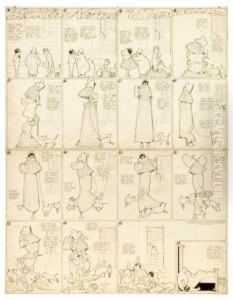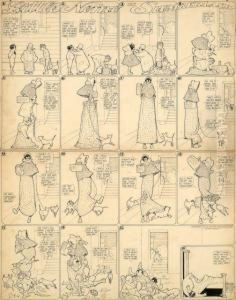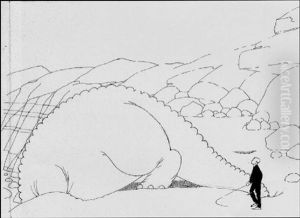Winsor Mccay Paintings
Winsor McCay was an American cartoonist and animator, born in 1869 in Spring Lake, Michigan. He is best known for his pioneering works in animation and for his comic strip 'Little Nemo in Slumberland,' which first appeared in 1905. McCay's innovative use of animation, detailed drawings, and his exploration of dreamscapes in 'Little Nemo' made him a central figure in the development of early comic and animation art forms.
McCay began his artistic career at a young age, quickly demonstrating a prodigious talent for drawing. He worked as a poster and commercial artist before turning to newspapers and comic strips in the late 1890s. His early works, including 'Little Sammy Sneeze' and 'Dream of the Rarebit Fiend,' showcased his unique style and his fascination with dreams and the surreal. However, it was 'Little Nemo in Slumberland' that became his most celebrated work, admired for its artistic quality, narrative innovation, and the complexity of its images.
In addition to his work in comics, McCay is also a pioneer in the field of animation. His most famous animated film, 'Gertie the Dinosaur' (1914), is considered one of the earliest examples of character animation. 'Gertie' demonstrated McCay's mastery of the medium and his ability to imbue his characters with personality and emotion, a significant advancement in animation techniques. McCay produced several other animated films, including 'The Sinking of the Lusitania' (1918), an early attempt at animated documentary.
Despite his contributions to comics and animation, McCay's work was somewhat forgotten after his death in 1934. However, his legacy was revived in later decades, and he is now recognized as a foundational figure in the history of both comics and animation. His influence can be seen in the works of many later artists and animators, and 'Little Nemo in Slumberland' continues to be celebrated for its creativity and artistry. McCay's pioneering spirit and his relentless pursuit of new forms of expression have cemented his place as one of the most important figures in the history of American art and animation.
